Two nights at Capella Taipei, courtesy of the hotel, sounds like a dream, right? It was. But this review? Purely my own, unfiltered and untainted. Consider this my independent deep dive into Taipei’s newest luxury haven. No sugar coating, just honest impressions.
Forget generic travel lists. Taipei isn’t just on our radar for 2025; it’s blazing a trail. This vibrant capital isn’t just embracing sustainability and championing human rights, it’s reinventing its tourism landscape. The crown jewel? The April debut of a breathtaking new hotel. Step aside, sleepy luxury scene! Capella Taipei, the latest masterpiece from Asia’s fastest-growing luxury chain, has arrived, shattering a decade-long silence in the Taiwanese capital’s high-end hospitality.
Beyond the imposing bronze doors, Andre Fu’s “modern mansion” unfolds. Forget sterile hotel lobbies; here, a feeling settles in – a quiet resonance that whispers, “You’ve arrived. And so has this place.”
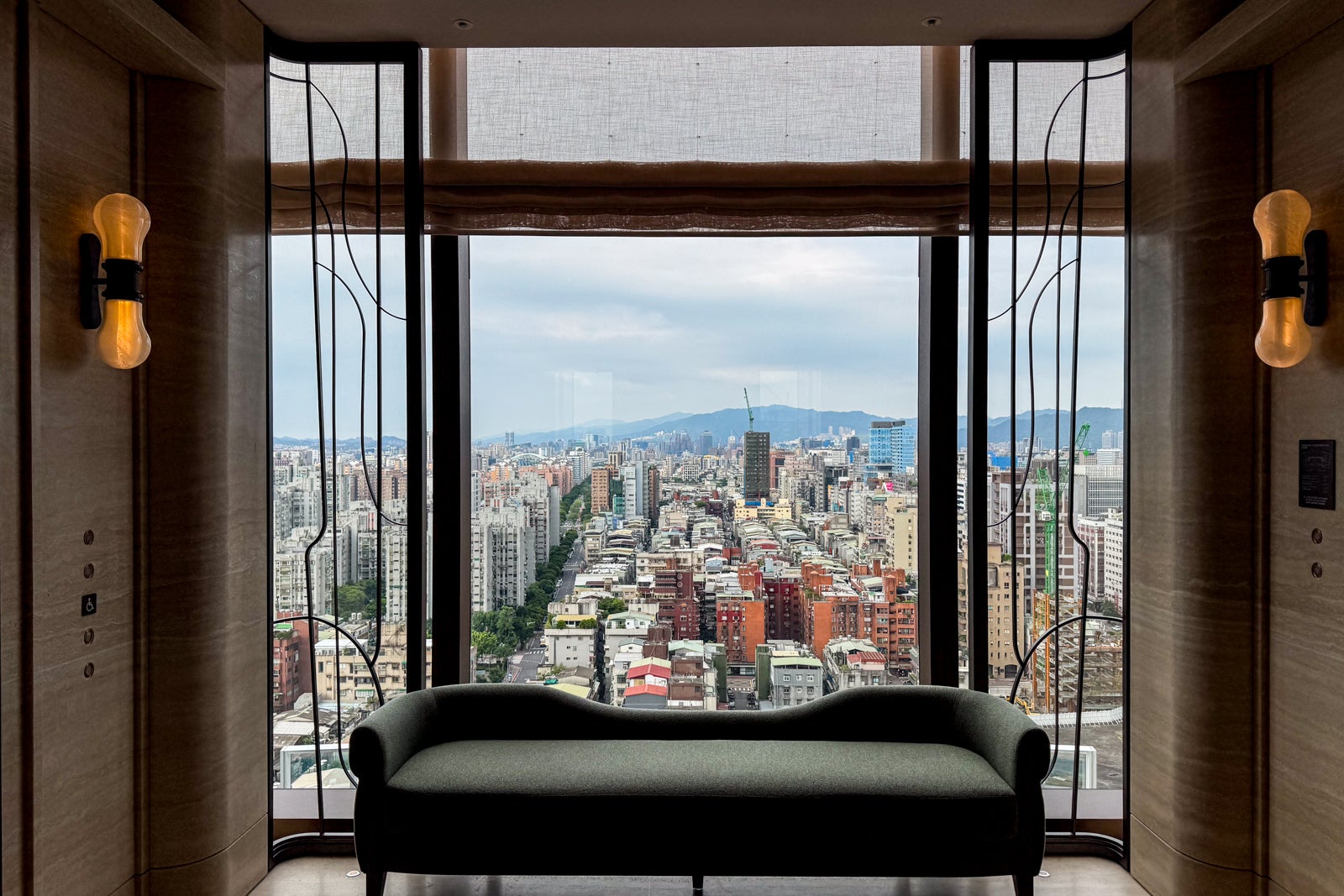
ERIC ROSEN/THE POINTS GUY
First impressions
Capella Taipei hides in plain sight. Its glass tower blends seamlessly into Dunhua North Road’s corporate landscape, until your eye snags on a pair of ancient banyan trees guarding its entrance. Step inside and prepare to shed any preconceived notions of generic hotel experiences. This is something entirely different.
Previous slide
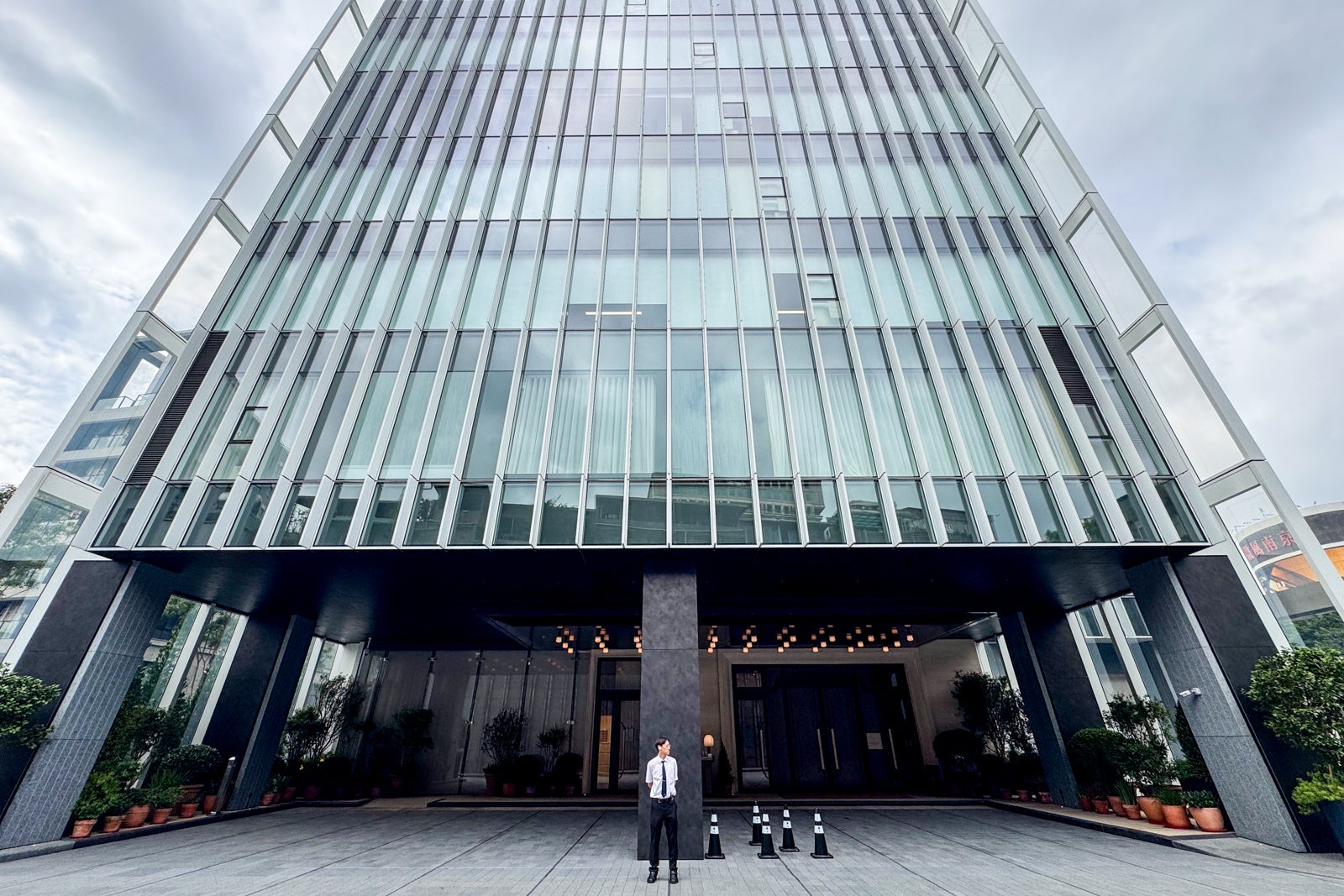

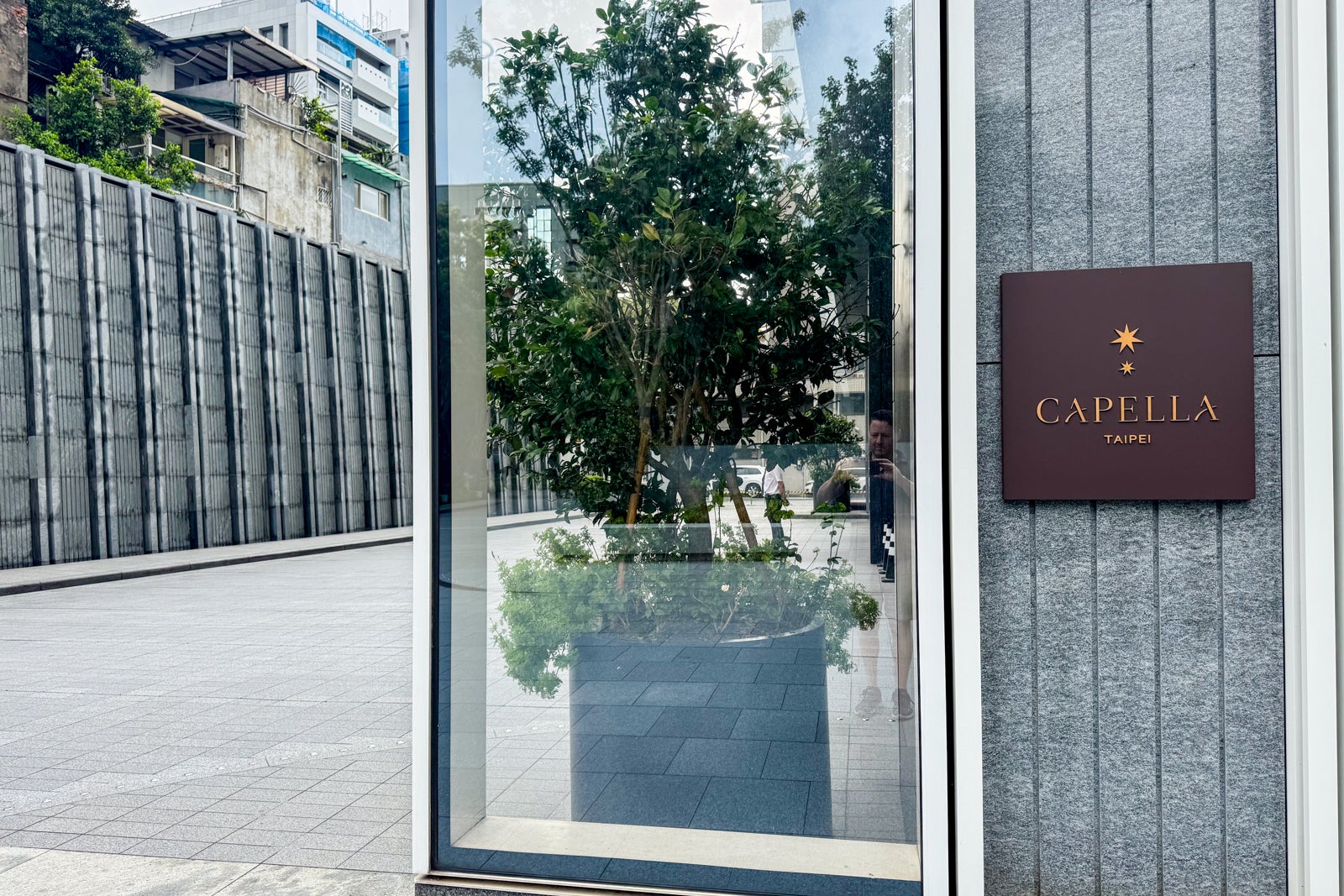

Next slide
1 of 4
ERIC ROSEN/THE POINTS GUY
0
1
2
3
Imagine stepping into a world where art breathes life into geography. The first encounter? A breathtaking textile tapestry by Chen-Lin Lee, a vibrant ode to the Taipei Basin’s soul. Before it, a treasure trove awaits – a grand, circular table laden with curious artifacts and artistic gems, each whispering its own story. The eye dances, discovering endless artistic whispers in every nook and cranny.

ERIC ROSEN/THE POINTS GUY
Beyond the grand archway, a receptionist’s welcoming smile awaits. Settle in and let your gaze wander – original masterpieces by artists like the visionary painter Jasper Huang and the masterful sculptor Guang Yu Zhang surround you.
Previous slide



Next slide
1 of 3
ERIC ROSEN/THE POINTS GUY
0
1
2
Skip the lobby lines! Ascend to the 14th-floor Living Room, a sun-drenched sanctuary exclusively for hotel guests. Check in amidst lounge-like luxury, refresh with a chilled towel, and kickstart your stay with a shot of invigorating, immunity-boosting juice.
Previous slide






Next slide
1 of 6
ERIC ROSEN/THE POINTS GUY
0
1
2
3
4
5
Fu’s design DNA, already celebrated in Hong Kong’s Upper House and St. Regis, pulses through this hotel. Expect echoes of art deco glamour and the dramatic flourish of expansive, screen-like panels, signature touches that transform mere spaces into captivating experiences.

ERIC ROSEN/THE POINTS GUY
But the real showstopper? A breathtaking mural in Plume, the hotel’s all-day restaurant. Parisian artist Elsa Jeandedieu has conjured a shimmering tapestry of gold, bronze, and copper, a subtle nod to Taiwan’s breathtaking diversity. Peer closely, and you’ll discover playful blue magpies, Taiwan’s national bird, flitting amidst the metallic landscapes. It’s a feast for the eyes as much as the palate.
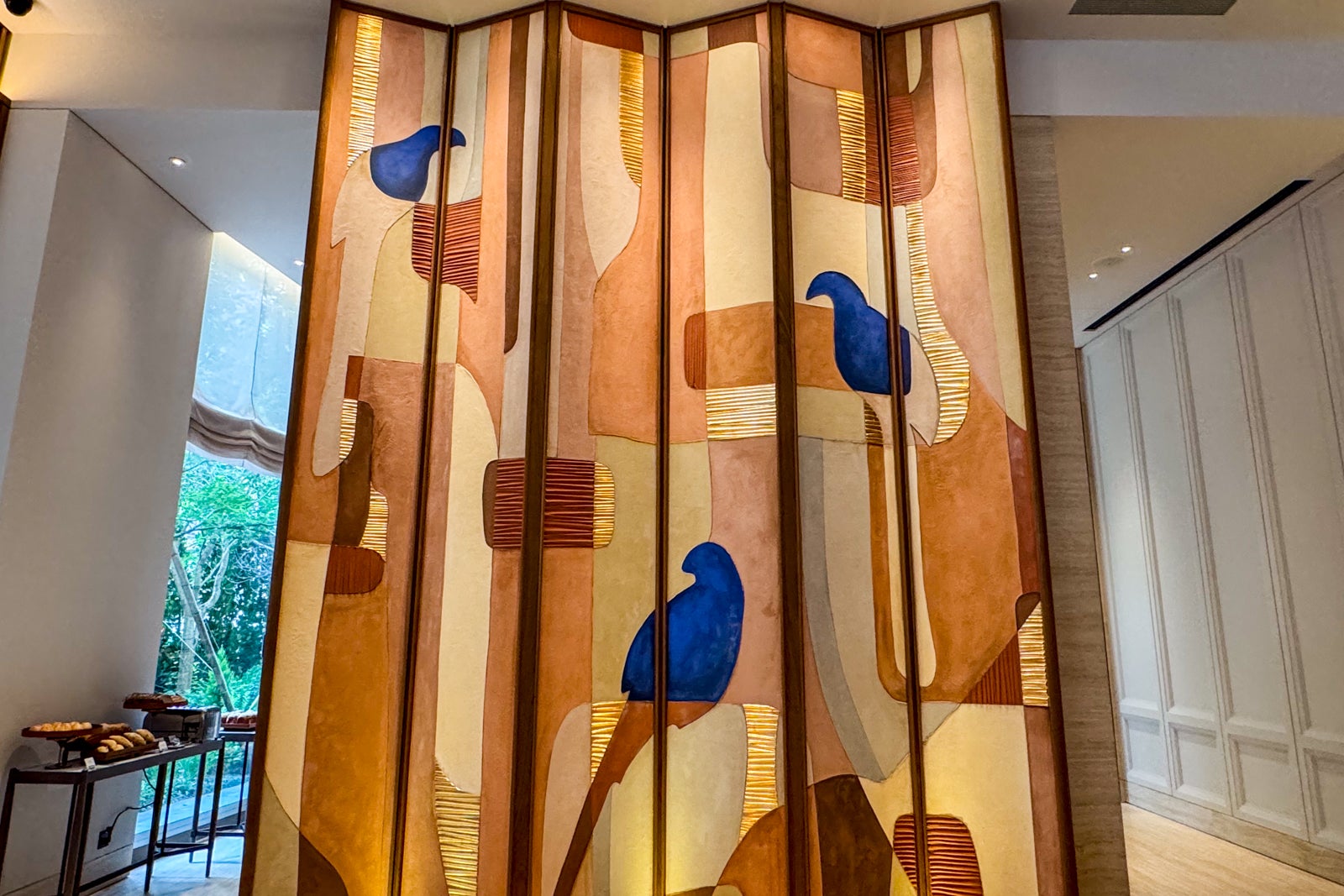
ERIC ROSEN/THE POINTS GUY
Imagine a calla lily, frozen mid-bloom, its creamy petals sculpted into a breathtaking spiral staircase. Hand-hewn wooden railings trace its ascent, leading the eye to a burst of color: a vibrant oak sculpture by Mexican artist Joel Escalona, a hidden jewel nestled within the lily’s heart.

ERIC ROSEN/THE POINTS GUY
Forget ordinary hotel staff. At Capella, anticipate your every whim catered to by “Culturists” a seamless blend of concierge, tour guide, and personal butler. Craving a chilled refreshment and savory bite? Yearning for an exclusive insider’s tour of the city? A simple call unlocks a world of bespoke experiences.

ERIC ROSEN/THE POINTS GUY
The rooms
Capella Taipei offers an exclusive escape with only 86 havens: 78 rooms and 8 suites, 6 of which boast private plunge pools overlooking breathtaking terraces. Even the “Superior” rooms redefine spaciousness, starting at a lavish 500+ square feet.
Previous slide


Next slide
1 of 2
ERIC ROSEN/THE POINTS GUY
0
1
Escaping the ordinary, I ascended to my Premier King room, a sprawling 700 square foot sanctuary several levels above. My private balcony, an idyllic perch overlooking the turquoise allure of the pool below, became my ritualistic morning haven. Each day began with the rich aroma of Nespresso, savored in the cool, pre-dawn air, a tranquil prelude before the sun’s embrace intensified.
Previous slide


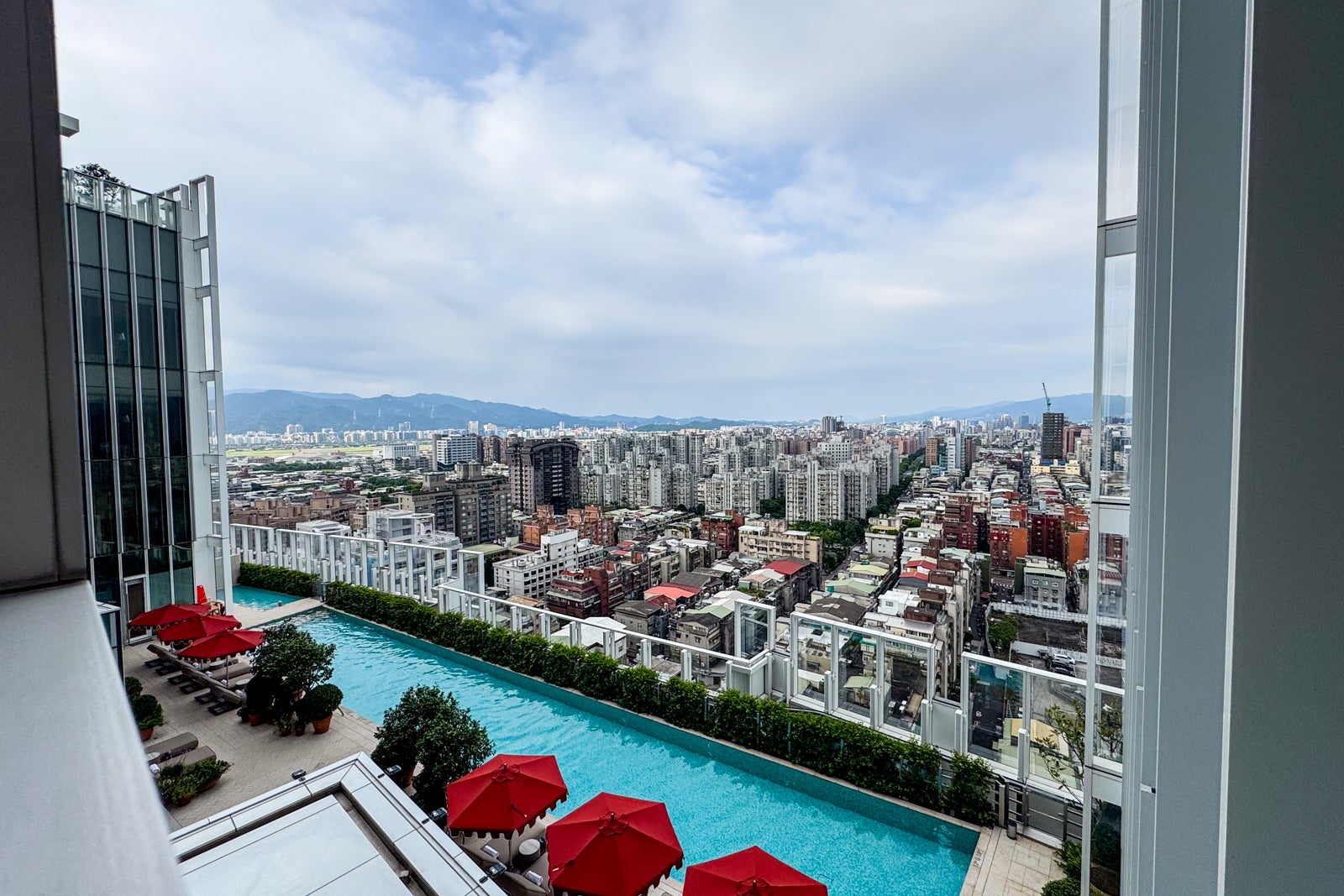

Next slide
1 of 4
ERIC ROSEN/THE POINTS GUY
0
1
2
3
The room breathed tranquility. Taupe whispers danced with beige sighs, punctuated by silver glints and pale blue dreams. Light spilled across blanched wood panels, warming walnut floors that flowed into rugs alive with art deco curves.
Previous slide

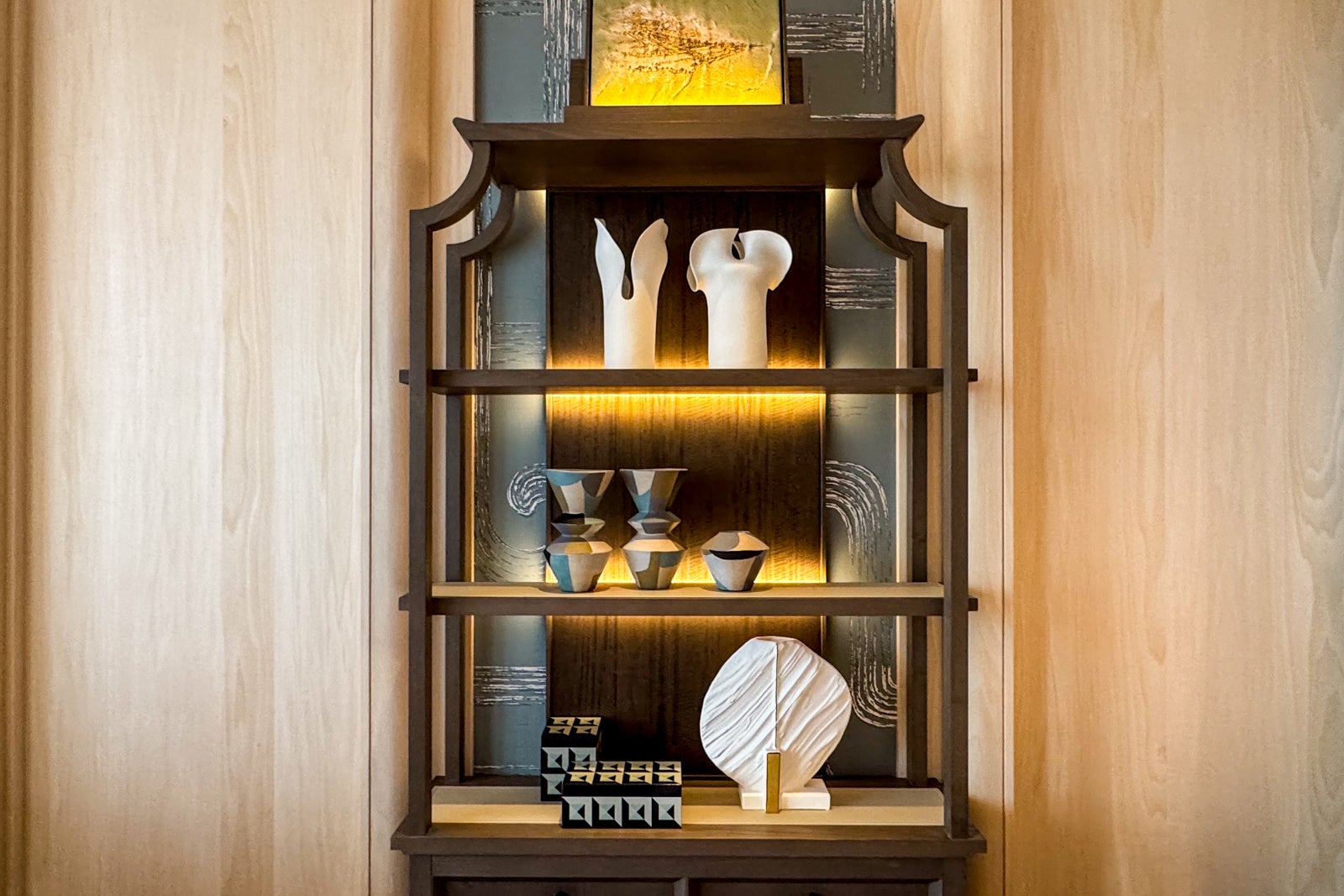

Next slide
1 of 3
ERIC ROSEN/THE POINTS GUY
0
1
2
The bed was a whispered promise of tranquility, its headboard a dark, intricately carved ode to the Orient, framing a serene, pale blue panel. Each evening, I surrendered to its embrace, sinking into the cloud of ultra-soft gray linens a nightly ritual only preceded by the silken indulgence of a Frette bathrobe.

ERIC ROSEN/THE POINTS GUY
The room hummed with future-chic amenities. Universal plugs winked from the walls, flanking a constellation of USB-A and C ports. A symphony of buttons stood ready to orchestrate every whim, from raising the curtain on a panoramic view to coaxing the lights into a sultry dim. But the real showstopper? A sleek, bedside console, a miniature portal to an AI concierge. A simple voice command unleashed its power, transforming spoken desires – a request for arctic air or a summons for reception – into instant reality.
Previous slide

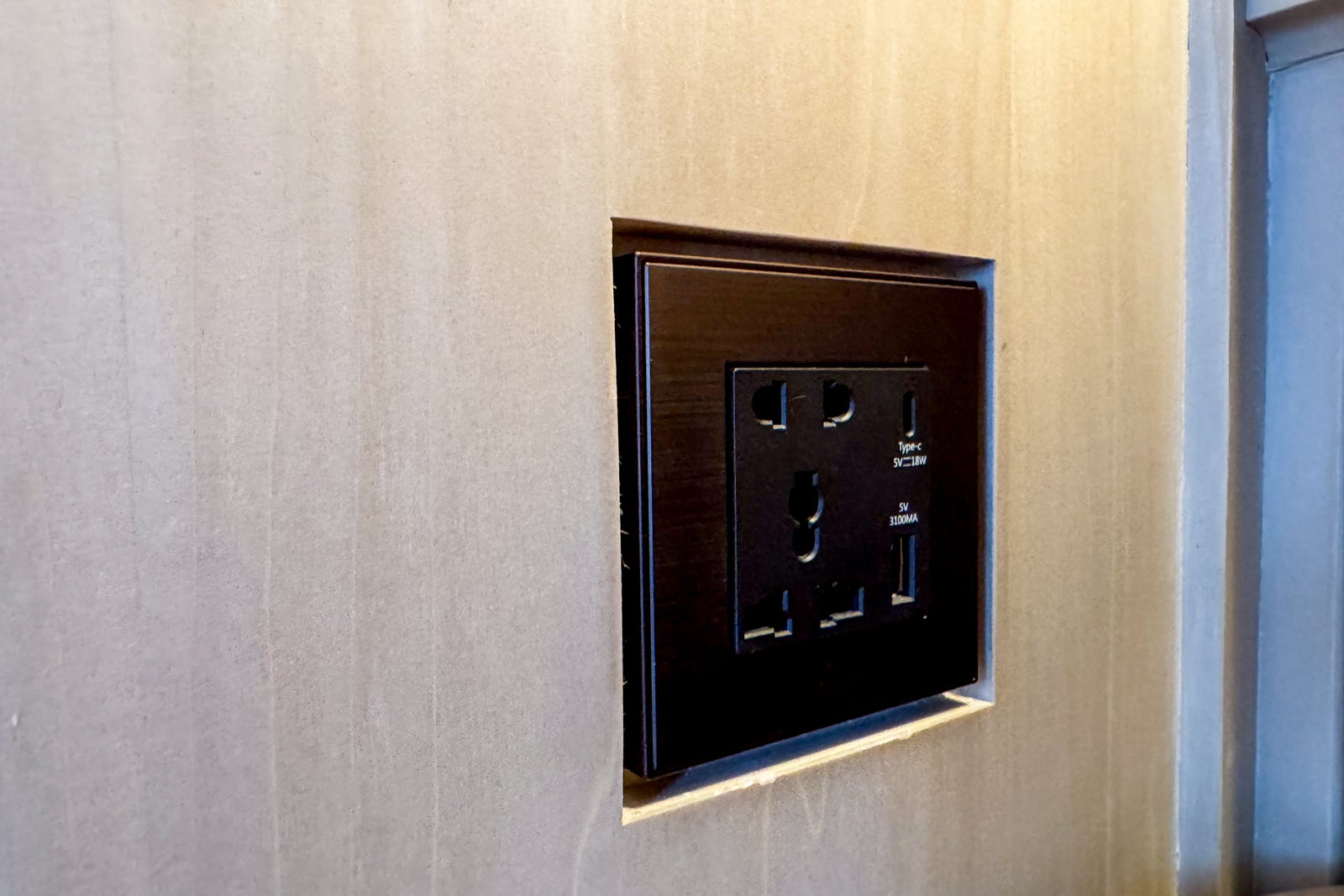
Next slide
1 of 2
ERIC ROSEN/THE POINTS GUY
0
1
The afternoon’s adventures concluded, a rumble in my stomach signaled dinnertime. I traded imaginary worlds for the tangible one, padding towards the cavernous, Travertine-tiled bathroom. There, amongst the cool stone, I prepared to wash away the day’s play with the luxurious scent of Bamford.
Previous slide

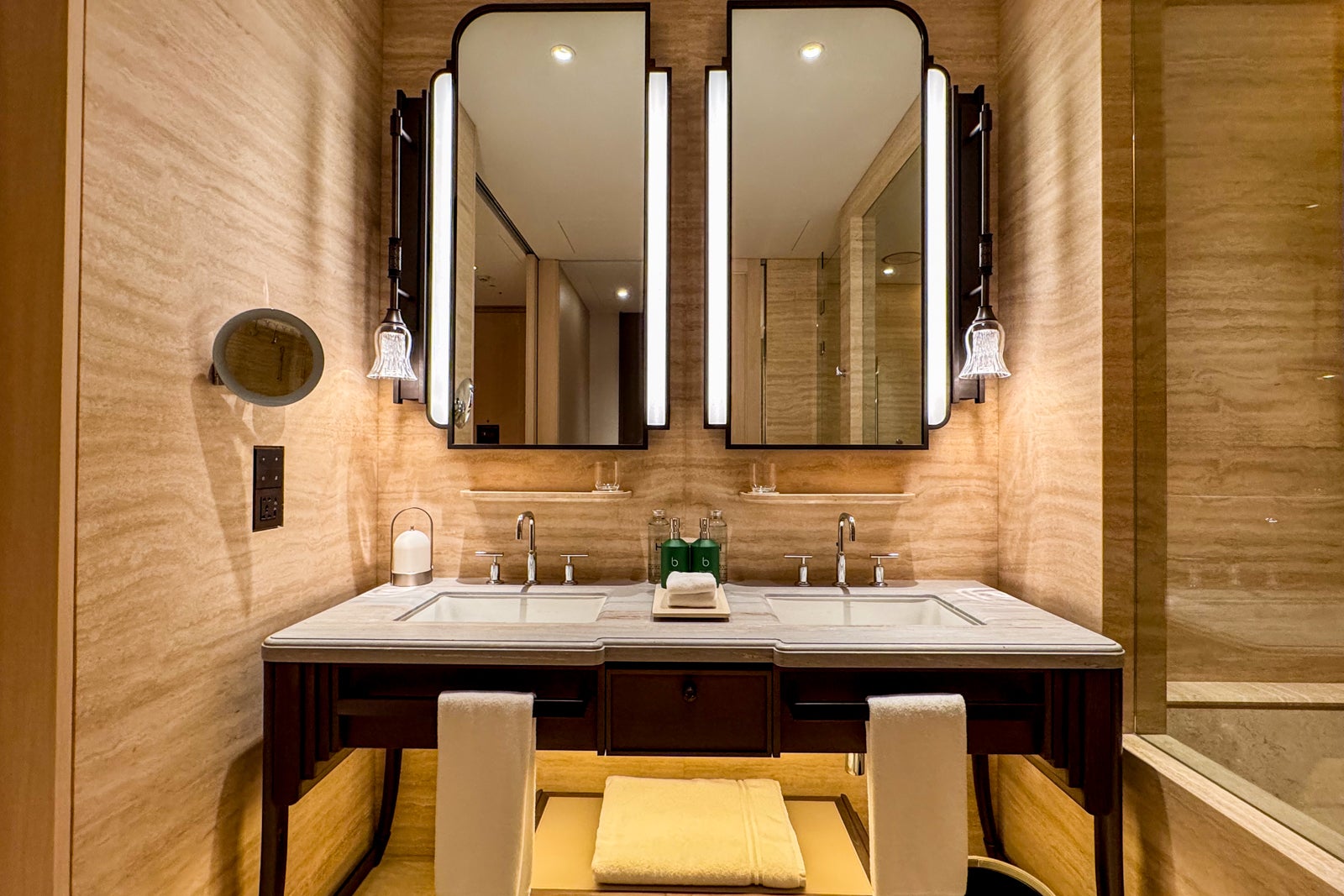

Next slide
1 of 3
ERIC ROSEN/THE POINTS GUY
0
1
2
Step into this sanctuary: dual sinks gleam, reflecting the morning light. A discrete chamber conceals a smart toilet, anticipating your every need. But the real indulgence lies beyond: a glass-walled oasis where a deluge from the ceiling shower head washes away the world. And then, the pièce de résistance – an oversized soaking tub, beckoning with scented bath salts and a promise of languid hours. Surrender to the serenity; lose yourself in a day of exquisite self-care.
Previous slide


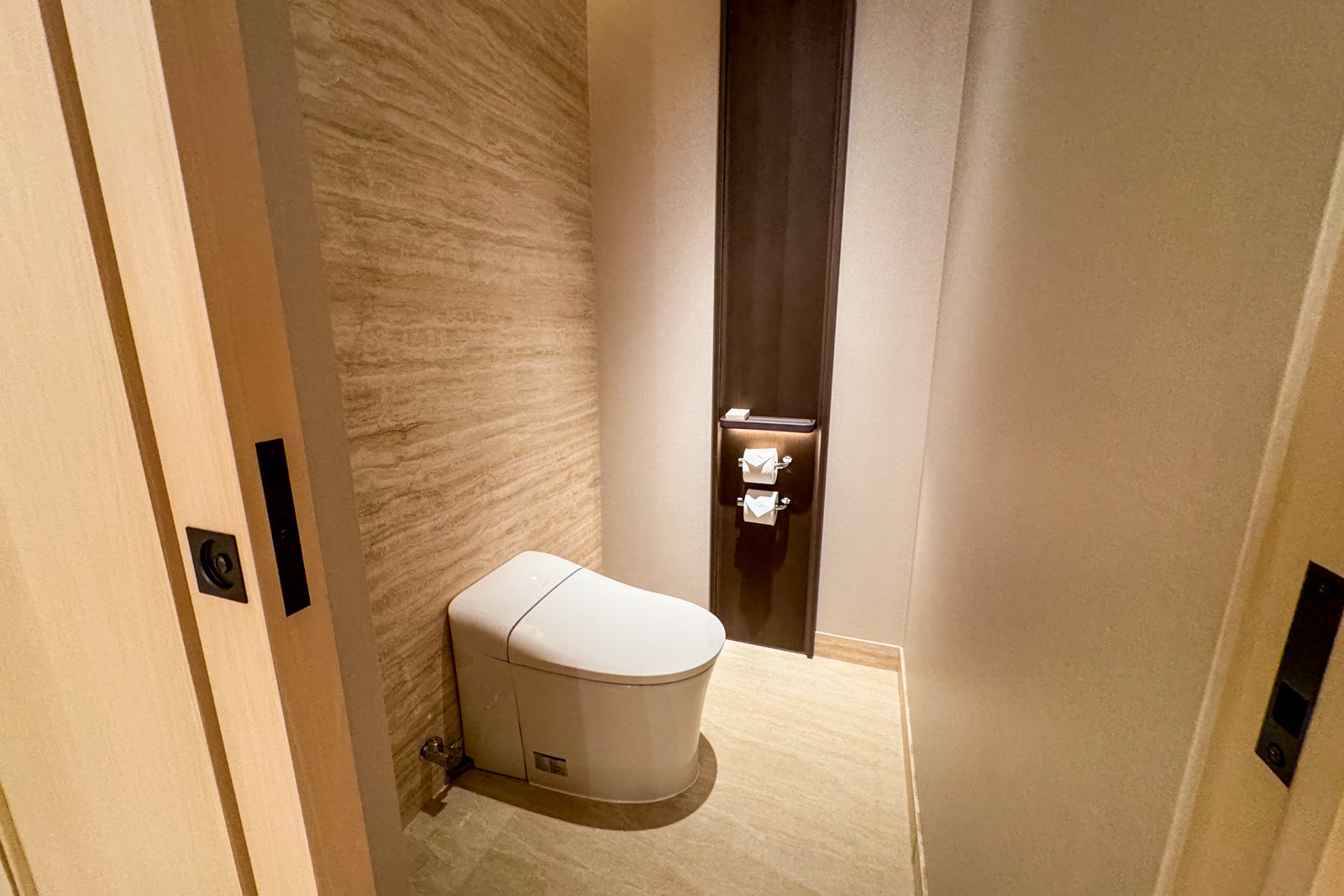
Next slide
1 of 3
ERIC ROSEN/THE POINTS GUY
0
1
2
Dining
Capella Taipei isn’t just a place to stay; it’s a culinary journey. Prepare your palate for five distinct dining experiences, each a masterpiece in its own right. And when the sun dips below the horizon, a revolutionary bar concept awaits, promising cocktails that are as imaginative as they are delicious. Get ready to eat and drink your way through Taipei’s most exciting new destination.
Plume
Plume, French for feather, takes flight in the hotel’s lobby lounge, a name inspired by the azure magpies gracing the expansive mural at its far end.
Previous slide


Next slide
1 of 2
ERIC ROSEN/THE POINTS GUY
0
1
Plume awakens your senses from 6:30 a.m. until the stroke of midnight daily. Imagine starting your day with their legendary breakfast buffet, a symphony of flavors where the matcha croissants steal the show. Dare to venture beyond the familiar with their turnip cakes, ignited by a fiery sauce, or an omelet bursting with Taiwanese basil, scallions, and the subtle crunch of dried radish. For the coffee aficionado, their single-source pour-over is a revelation – my Ethiopian batch danced with fruity notes, a liquid gem to be savored.
Previous slide






Next slide
1 of 6
ERIC ROSEN/THE POINTS GUY
0
1
2
3
4
5
As daylight stretches, embark on a culinary journey where Europe dances with Taiwan. Begin with a classic shrimp cocktail ($15), a refreshing prelude to the symphony of flavors ahead. Later, surrender to the intoxicating allure of beef noodles with chili sauce ($27), a Taiwanese heartwarmer that ignites the senses.
Previous slide



Next slide
1 of 3
ERIC ROSEN/THE POINTS GUY
0
1
2
As twilight descends, seek refuge here. Before the dinner rush, the bar awakens with signature cocktails. Each concoction, a tribute to Taiwan’s native birds, features ingredients mirroring their natural diet a sip of avian inspiration.

ERIC ROSEN/THE POINTS GUY
Across the reception area from Plume, the aroma of warm sugar and freshly brewed coffee beckons. Discover Atelier Plume, a charming cafe and patisserie, where delectable treats and steaming cups of your favorite brew await, promising a sweet escape any time of day.
Previous slide



Next slide
1 of 3
ERIC ROSEN/THE POINTS GUY
0
1
2
Ember 28
Ember 28 isn’t just a restaurant; it’s an experience, meticulously crafted over 28 days. From the aging of their prime steaks and succulent fish to the fiery kiss of the embers upon the grill, every element is honed to perfection. Beneath the breathtaking sparkle of enormous crystal chandeliers, drama unfolds nightly as diners become captivated by the open kitchen, a stage where culinary artists orchestrate each dish with balletic precision. It’s a symphony of flavor and spectacle, reserved for unforgettable occasions.
Previous slide


Next slide
1 of 2
ERIC ROSEN/THE POINTS GUY
0
1
Forget browsing the à la carte. Dive headfirst into their seven-course symphony, a culinary journey priced between $140 and $160. The conductor? Your choice of prime cut. Pro-tip: the dry-aged strip loin is a revelation. Each dish sings with the flavors of Taiwan – succulent, locally-raised pork, the surprising crunch of wax apples, glistening fresh-caught snapper, earthy Jerusalem artichoke kissed with the bright tang of maqaw peppers. It’s not just a meal, it’s an edible portrait of the island.
Previous slide







Next slide
1 of 7
ERIC ROSEN/THE POINTS GUY
0
1
2
3
4
5
6
Mizue
Craving a culinary counterpoint to Taiwan’s rich tapestry of flavors? Let Mizue, the hotel’s omakase jewel, transport you to Japan. Forget heavy sauces; here, artistry reigns. Witness a sushi master’s ballet of precision and freshness as he crafts your personalized journey. Available for light-filled lunches Friday to Sunday (11:30 a.m. – 3 p.m.) and enchanting dinners Wednesday to Sunday (6:30 – 10 p.m.).
Rong Ju
Rong Ju, Capella Taipei’s exquisite Cantonese jewel, beckons discerning palates Tuesday through Saturday. Indulge in a symphony of flavors during lunchtime, from 12:00 PM to 2:30 PM, or surrender to an evening of culinary artistry between 6:00 PM and 10:00 PM. Explore meticulously crafted, multi-course prix fixe menus, culminating in the unforgettable “Formosa” experience. For approximately $170 per person, prepare to be captivated by delicacies such as succulent steamed crab claw crowned with glistening caviar, subtly infused with the fragrance of Chinese wine, and the ethereal steamed egg white elevated by a rich chicken jus.
Glasshouse
Soon to rise within its walls, the hotel will unveil Glasshouse, a breathtaking three-story bar where master mixologists craft artisanal cocktails and connoisseurs savor exquisite wines.
Amenities and service
Previous slide

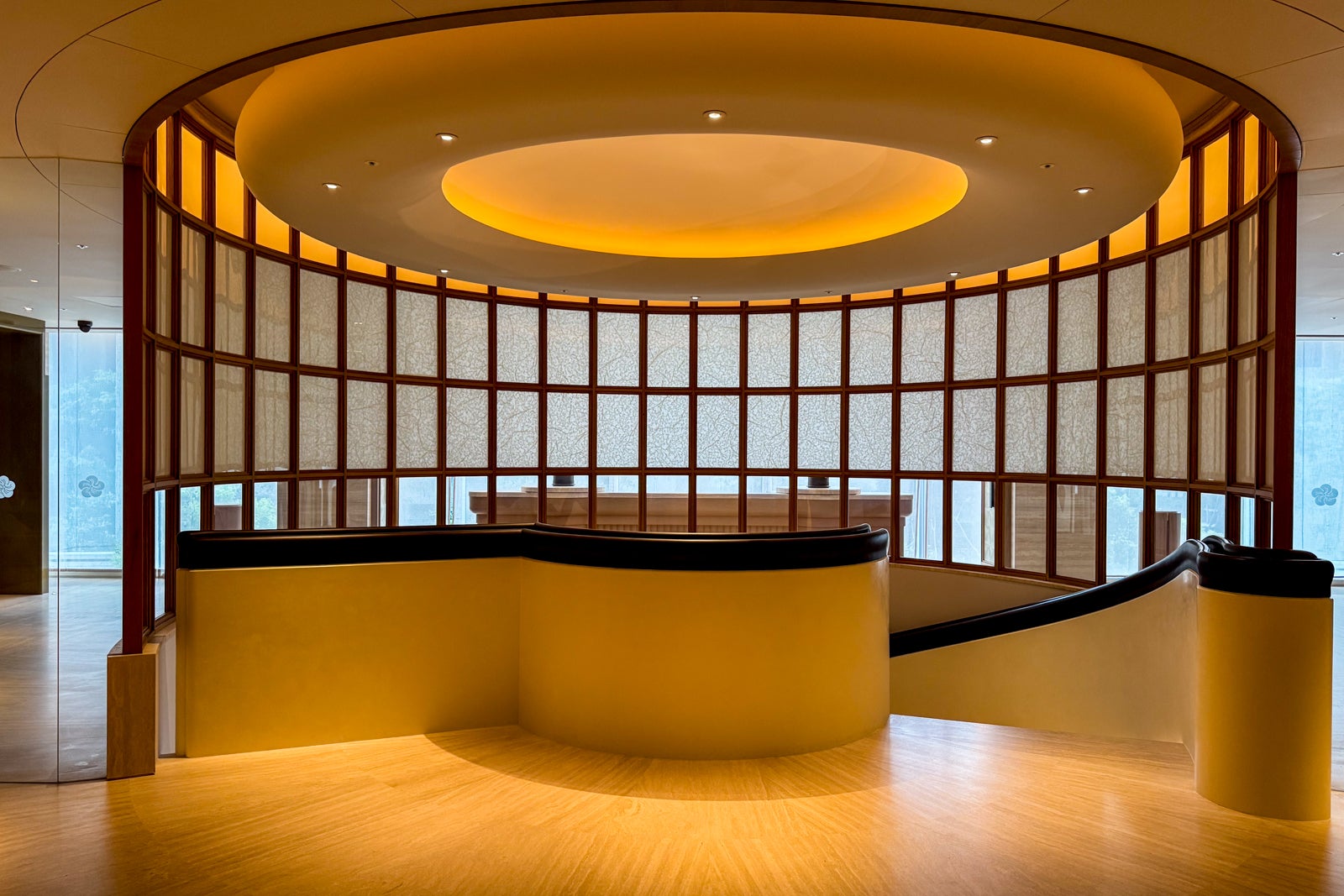

Next slide
1 of 3
ERIC ROSEN/THE POINTS GUY
0
1
2
Imagine the 14th-floor Living Room as your personal pied-à-terre, a stylish sanctuary high above the city bustle. Sink into plush seating, indulge in complimentary refreshments available all day, and each evening, gather for a curated cocktail hour featuring local insights and delectable bites. It’s more than just a lounge; it’s an immersion into the city’s soul.
Ascend to the 14th floor where a scarlet oasis awaits. Plush loungers and decadent daybeds, shaded by vibrant red umbrellas, frame a breathtaking panorama of Taipei. Gaze upon the city’s iconic skyline, crowned by the unmistakable silhouette of Taipei 101, a view best savored from this exclusive, sky-high retreat.
Previous slide


Next slide
1 of 2
ERIC ROSEN/THE POINTS GUY
0
1
Previous slide
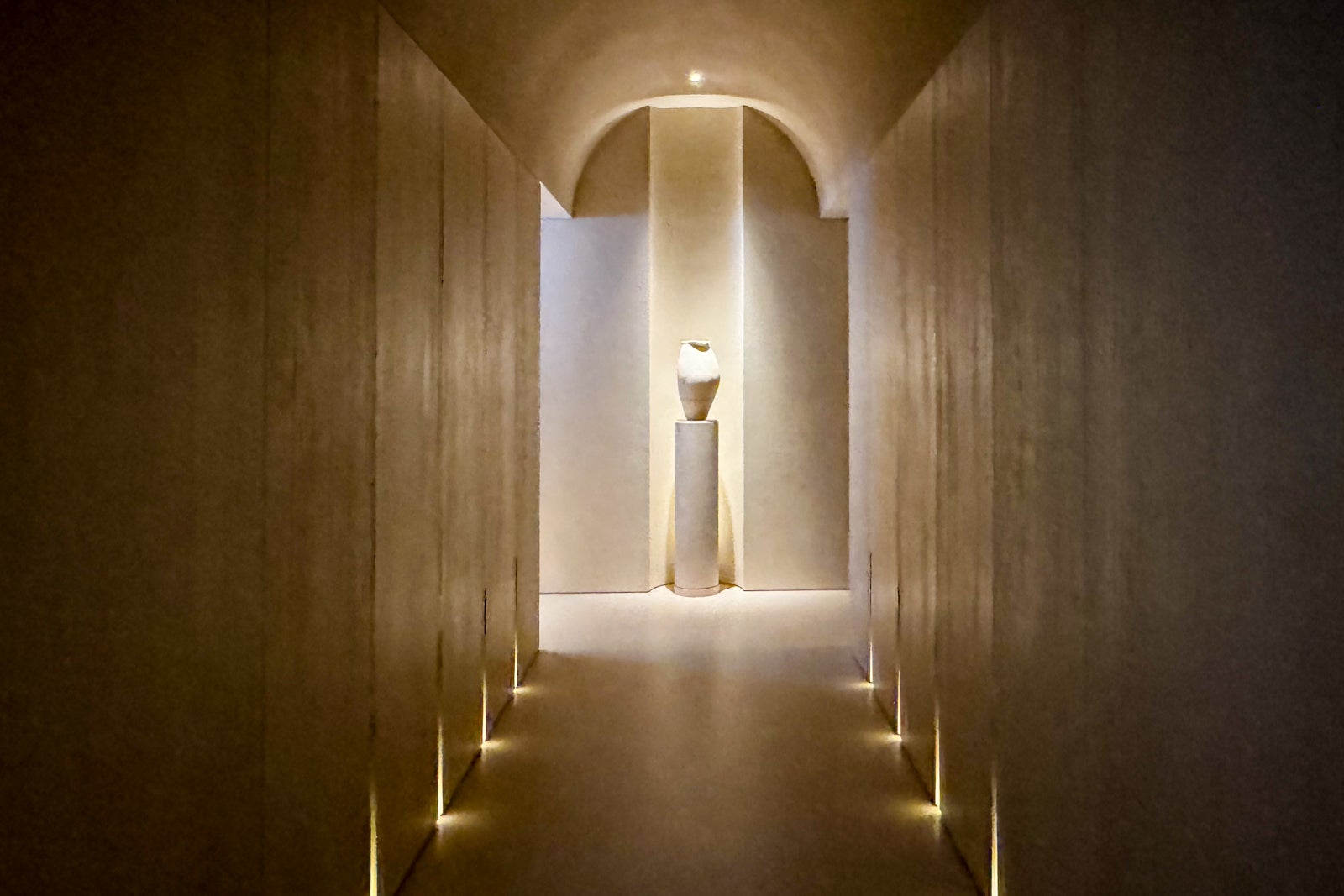
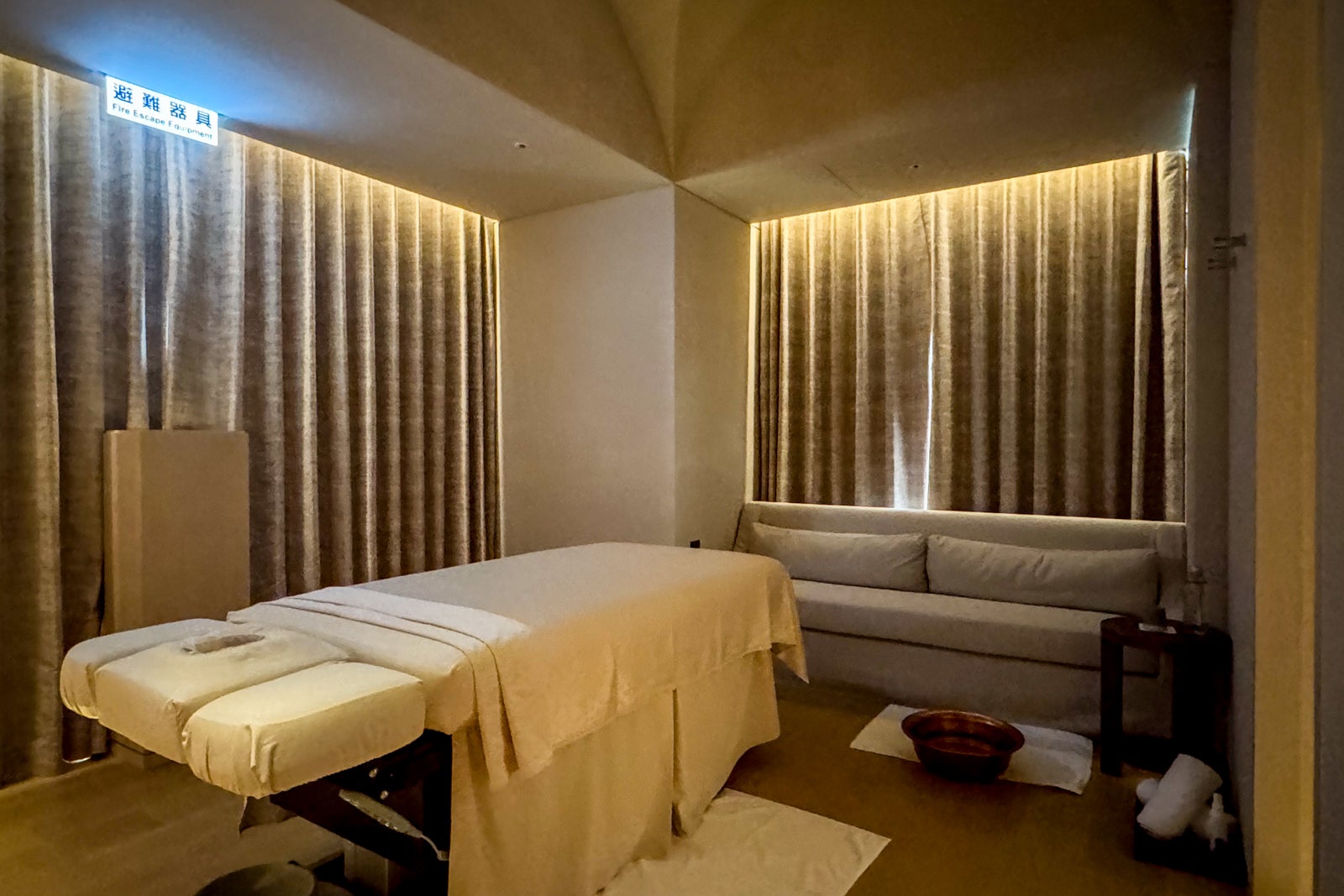
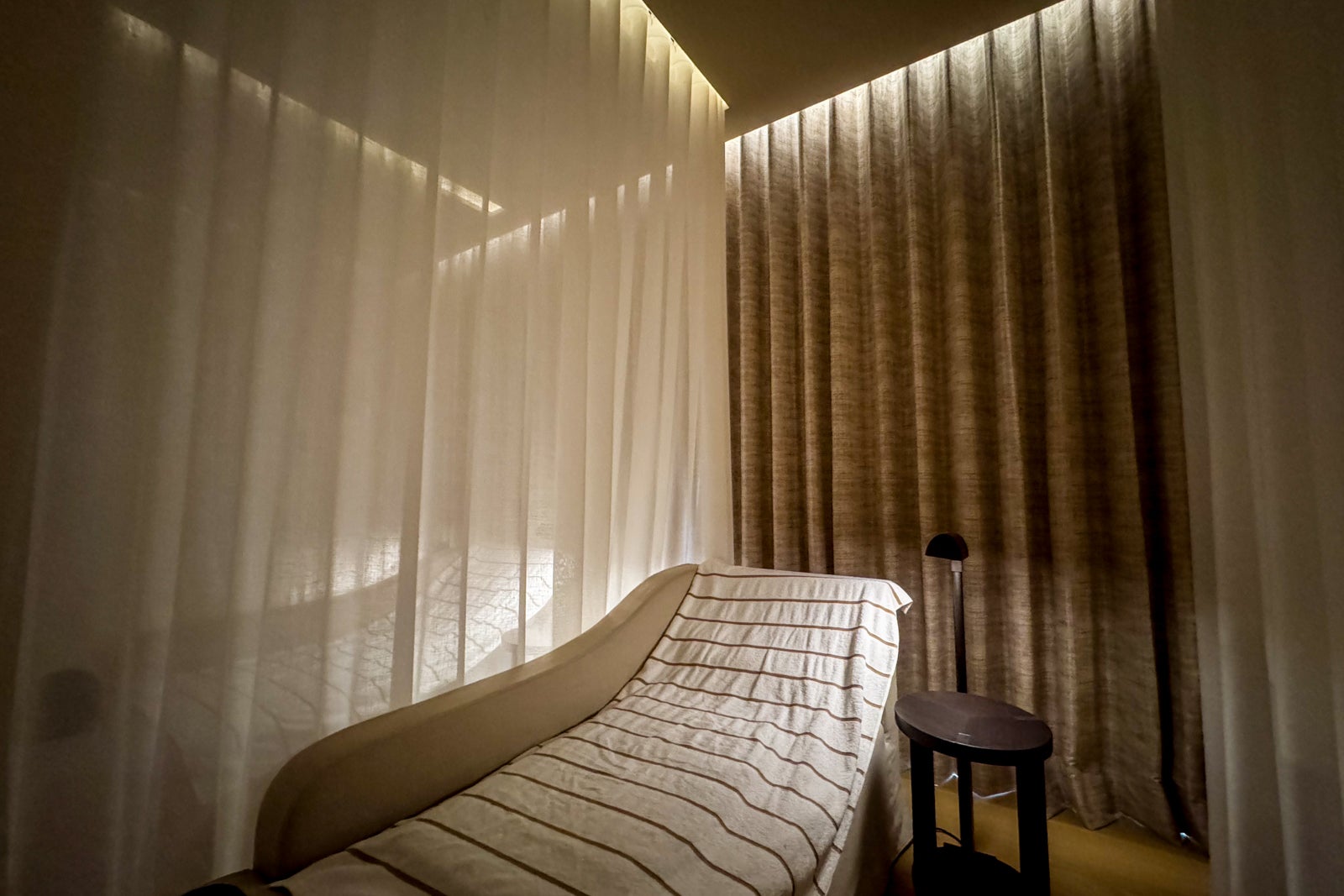

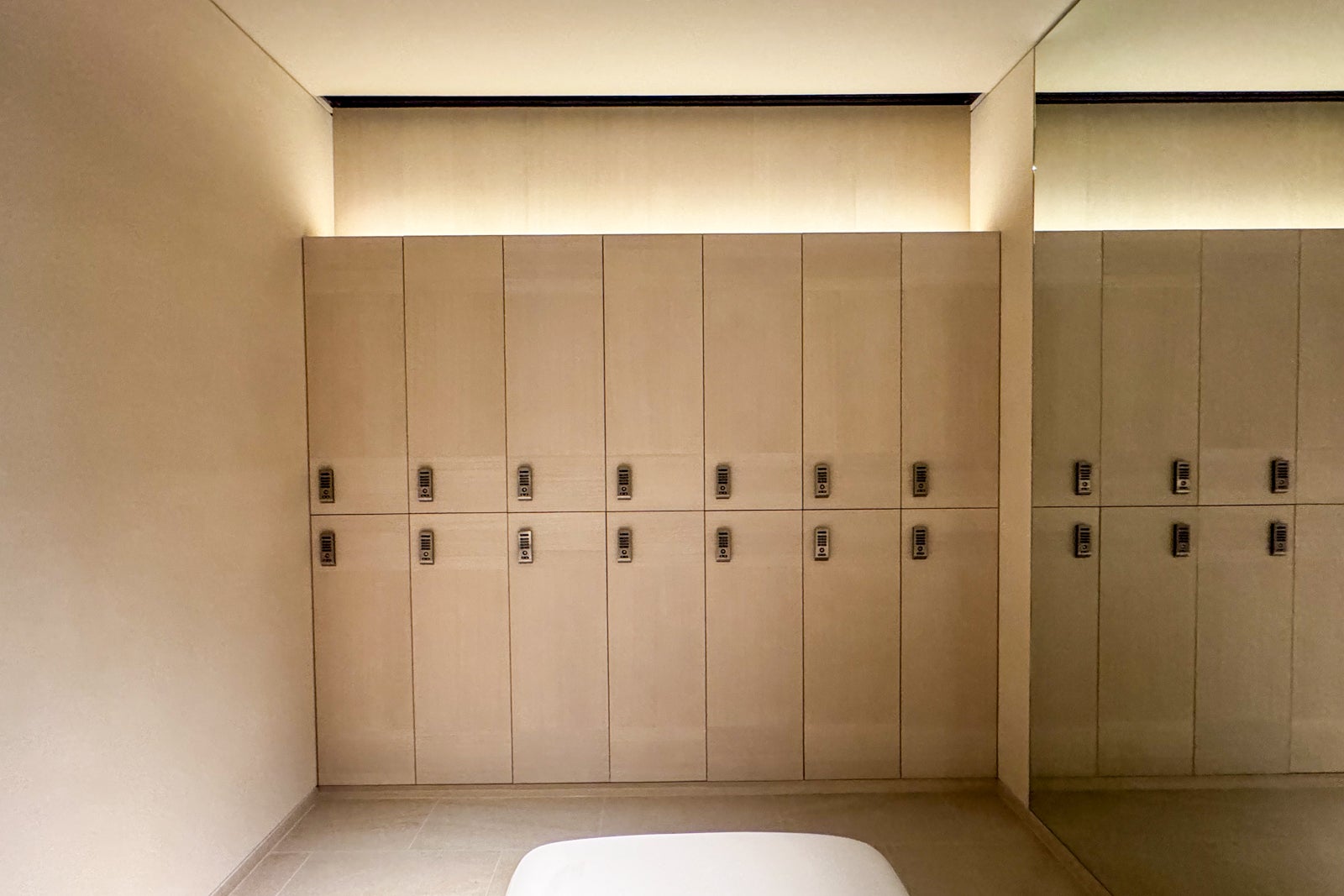
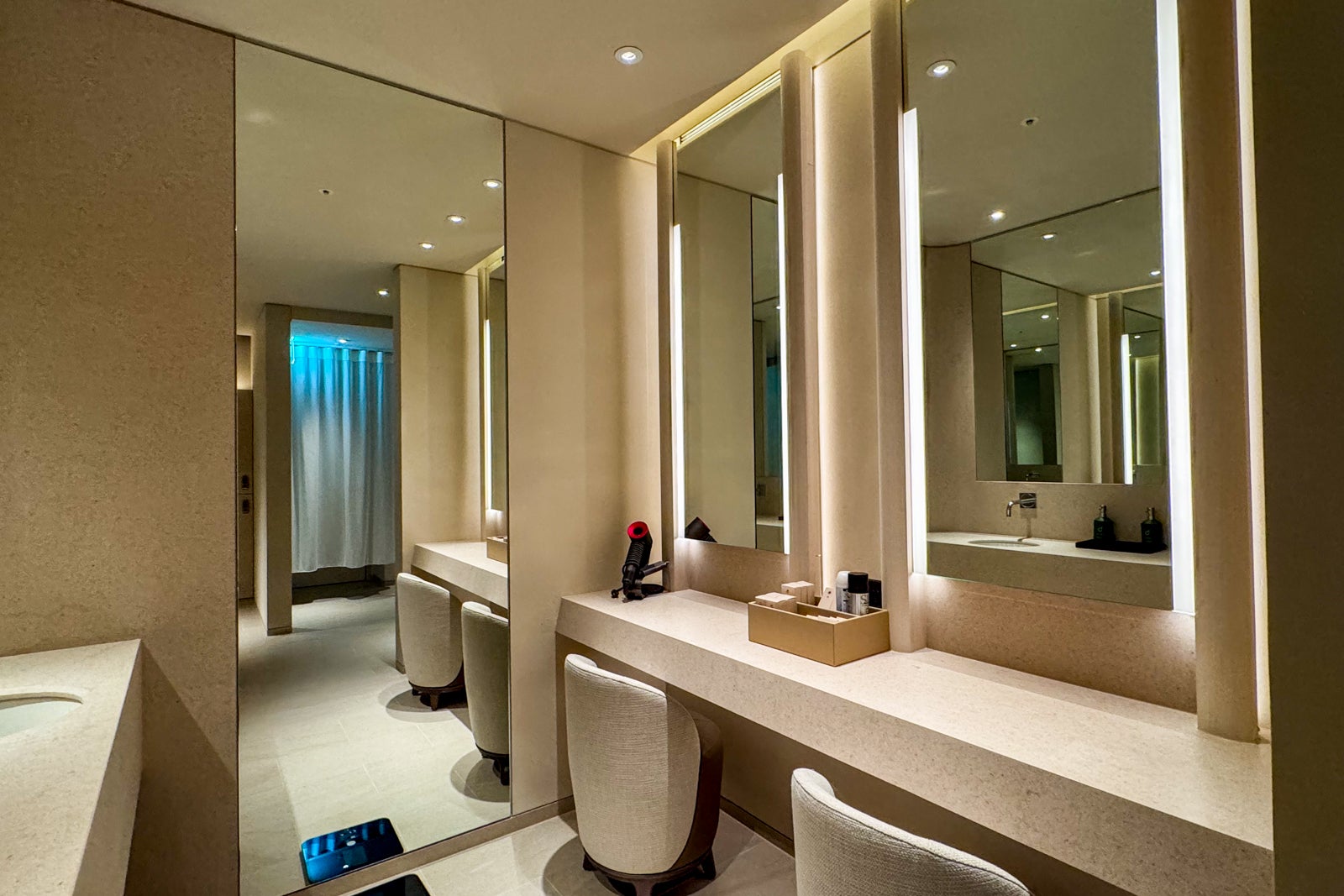

Next slide
1 of 7
ERIC ROSEN/THE POINTS GUY
0
1
2
3
4
5
6
- Adjacent to the spa, the fitness center is stocked with the current slate of Technogym cardio and weight equipment.
Previous slide


Next slide
1 of 2
ERIC ROSEN/THE POINTS GUY
0
1
Escape the ordinary with Capella’s daily “Rituals” and “Moments.” Imagine starting your day with the delicate flavors of Taiwan enjoyed beneath the ancient embrace of a banyan tree. Or perhaps, an afternoon spent discovering the art of tea in the Living Room, each sip a journey through tradition.
Uncover Taipei’s soul with Capella’s “Culturists.” Ditch the typical tourist traps and dive deep into authentic neighborhoods. Imagine: strolling through Songshan’s vibrant art scene, meeting master artisans in their workshops, or stepping back in time amidst Dadaocheng’s architectural treasures. These aren’t just tours; they’re curated connections to the heart of Taipei.
During my Songshan district exploration, a delightful surprise awaited at Words stationery store. Serendipitously, the hotel’s artist collaborator, Ariel Chi, was there, and as a charming memento, he spontaneously captured my likeness in a swift, captivating freehand sketch.
Previous slide



Next slide
1 of 3
ERIC ROSEN/THE POINTS GUY
0
1
2
Location and logistics
Nestled on the prestigious, tree-canopied Dunhua North Road, The Capella Taipei offers an oasis of serenity moments from the city’s downtown pulse. Forget frantic airport dashes – the domestic terminal is practically at your doorstep, and vibrant neighborhoods beckon with walkable adventures.
Venturing further? A rideshare to Taoyuan International Airport (TPE) clocks in at approximately 45 minutes, setting you back around $40-$50. But for the savvy traveler, a local secret awaits: a seamless metro and airport train connection. Picture this: gliding through the city for a mere $5, arriving at TPE in about the same time as a car, provided fortune favors your train timing. It’s a small price for a taste of Taipei’s efficient, local flavor.
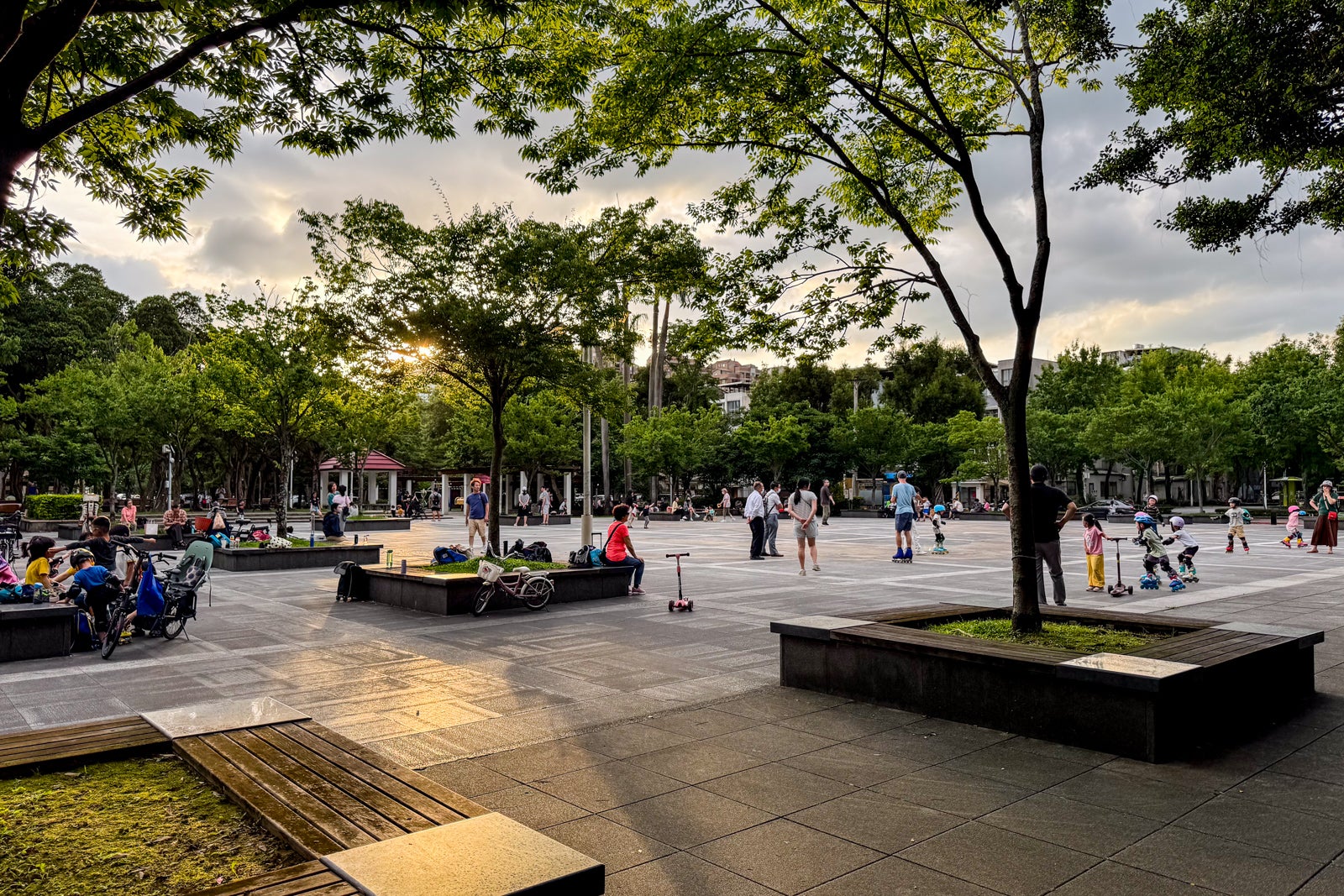
ERIC ROSEN/THE POINTS GUY
What it costs
Capella Taipei whispers luxury, but its nightly serenade begins around $600. Still too new to waltz into Amex’s Fine Hotels + Resorts program, its siblings already grace the exclusive list, hinting this Taipei gem will soon join the party. Book now and you might just snag a pre-program perk – bragging rights.
Accessibility
At the Capella Taipei, accessibility isn’t an afterthought it’s woven into the fabric of luxury. Their Premier King room awaits, designed for seamless comfort with mobility devices. Glide effortlessly from the street-level entrance into a world of refined hospitality, where public spaces welcome all. Elevators whisper you to upper floors, with one thoughtfully designed with lowered buttons for easy reach, ensuring a truly inclusive experience.

ERIC ROSEN/THE POINTS GUY
The fourteenth-floor hall offered tantalizing glimpses of turquoise water, but reaching the pool demanded an awkward step over a raised threshold. Beyond that, the inviting shimmer remained cruelly inaccessible, a chairlift conspicuously absent.
Bottom line
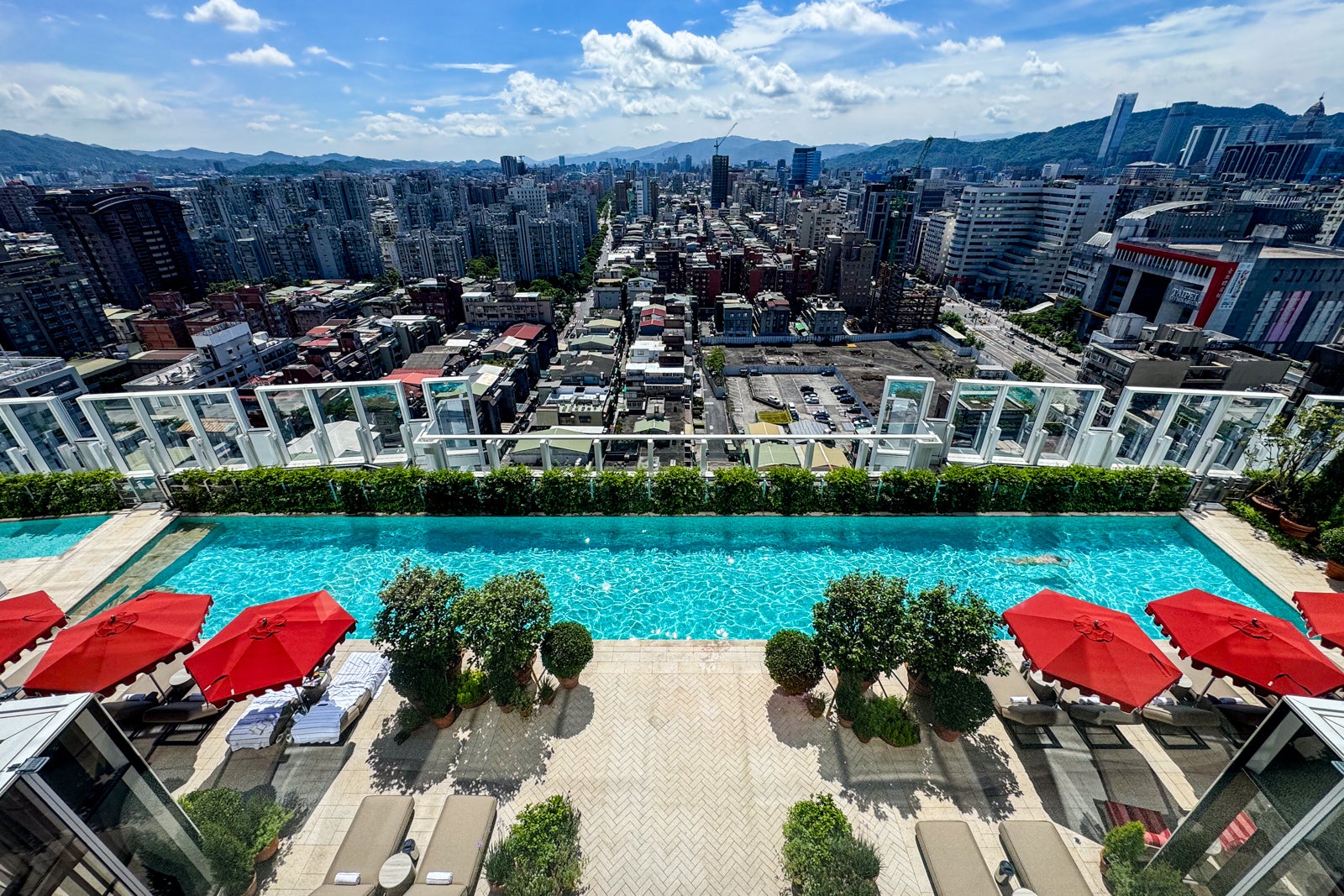
ERIC ROSEN/THE POINTS GUY
Capella and its sibling, Patina, are ascending rapidly in the luxury hotel sphere. Each new property signifies a bold stroke for this exclusive Asian brand. Capella Taipei is a testament to this success. Imagine entering spaces that whisper both welcome and wonder, retreating to rooms designed with exquisite restraint, and experiencing a level of personalized attention that doesn’t just cater, but connects you to the very soul of Taipei. This isn’t just a stay; it’s an unforgettable immersion into Taiwan’s vibrant heart.
Related reading:
- My stay at Capella Sydney: The hotel that gave me the luxury travel bug
- The best hotel credit cards
- Get free breakfast, upgrades and more with the Amex Fine Hotels + Resorts program
- The best hotel rewards programs in the world
- The best premium credit cards: A side-by-side comparison
- I earned back my Business Platinum Amex annual fee with a single two-night stay at the Peninsula Hong Kong
Thanks for reading Our first look inside the stunning new Capella Taipei


